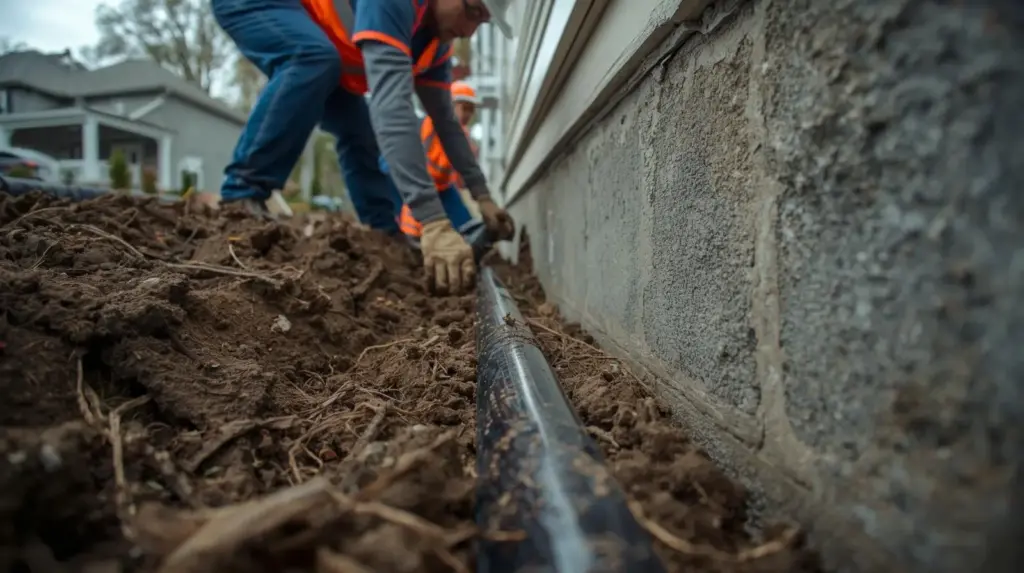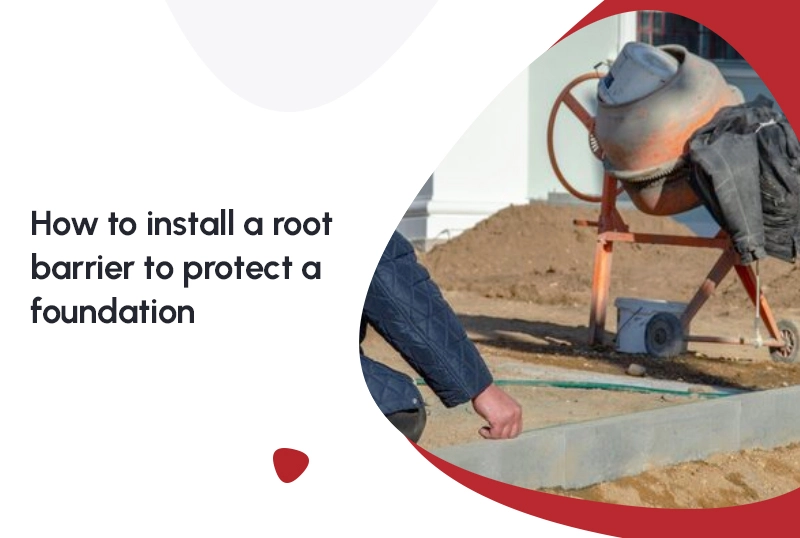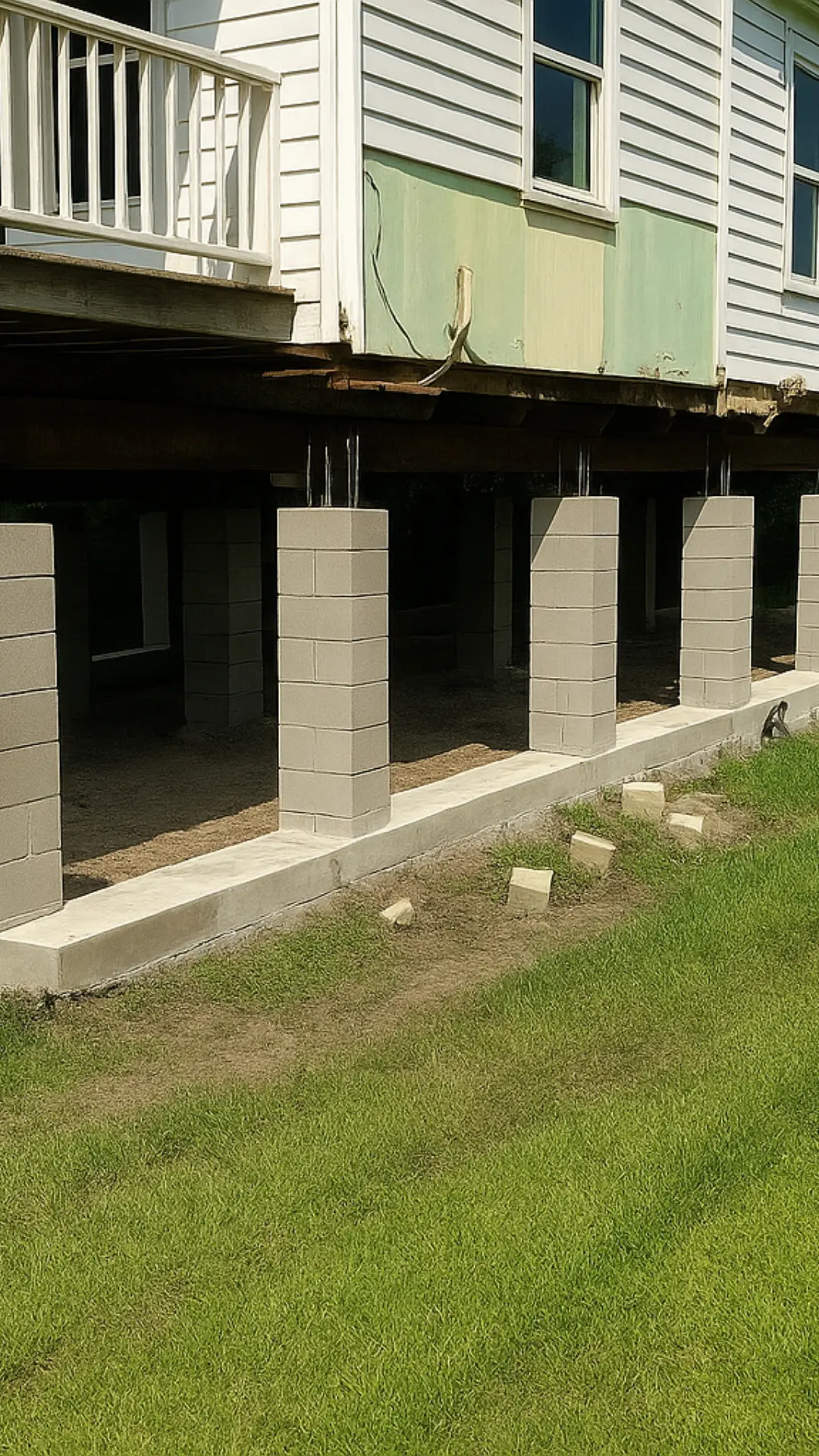Trees are beautiful, until their roots decide to treat your foundation like a personal playground. One day your home feels solid, and the next you’re spotting cracks, uneven floors, or strange shifting, all thanks to aggressive root systems silently creeping beneath your slab.
So, how do you keep the trees you love without sacrificing the foundation you depend on?
You install a root barrier, the secret weapon many homeowners don’t realize they desperately need.
This guide breaks down everything you should know: what root barriers do, how to install them, why they matter, common mistakes to avoid, and how to protect your home from root-induced damage. Let’s dig in.
Check out our foundation repair Fresno services to take early measures against other foundation issues.
Why Do Foundations Need Protection From Roots?
Tree roots don’t mean harm. In fact, they’re just on a mission, seeking moisture, oxygen, and nutrients. The problem? The soil under your foundation has exactly that.
Here’s what makes root intrusion a serious issue:
1. Soil Moisture Imbalance
Tree roots naturally pull moisture from the surrounding soil to support their growth. When they do this near a foundation, the soil begins to dry out, shrink, and lose volume. As the soil contracts, it creates empty pockets beneath the slab, causing the foundation to settle unevenly or shift out of place. This problem is especially common in clay-rich regions like Texas and California, where soils expand dramatically when moist and shrink aggressively when dry, making foundations highly vulnerable to even minor moisture changes caused by nearby trees.
Expansive clay soil causes an estimated $15–$21 billion in damage to U.S. homes annually.
2. Pressure Against the Foundation
As trees mature, their roots thicken and grow with surprising force. In some cases, these expanding roots begin to press directly against the side of a slab, grade beam, or supporting pier. Over time, this pressure can lead to cracking, lifting, or bowing of the foundation structure. What starts as gentle contact can quickly turn into significant structural stress, particularly when roots look for moisture trapped under or around the foundation.
3. Damage to Plumbing
Tree roots instinctively seek out water sources, making underground plumbing lines an irresistible target. Small cracks or loose joints in sewer or drain lines allow moisture to escape, essentially inviting roots in. Once inside, roots multiply and create clogs, backups, and leaks. These leaks saturate the soil, causing it to expand, soften, and shift beneath the foundation. The result is a damaging cycle of soil instability, foundation movement, and costly structural issues if not detected early.
According to the EPA, tree roots are the leading cause of sewer line blockages, accounting for up to 50% of all sewer system failures.
Foundation movement often leads to serious damage that may require foundation repair Fresno, house leveling Fresno, or even pier and beam foundation repair Fresno, but installing a root barrier early can stop the problem before it starts.
What Is a Root Barrier?
A root barrier is a physical or chemical shield placed underground to keep roots from spreading toward your foundation. It redirects root growth downward or outward, away from the structure, while still allowing trees to thrive.
Root barriers are typically made from:
- High-density polyethylene (HDPE)
- Geotextile fabrics
- Treated panels
- Chemical slow-release products (less common, more maintenance)
The goal?
Stop roots without harming the tree or altering your landscaping.

How to Install a Root Barrier (Step-by-Step Guide)
Installing a root barrier sounds intimidating, but with the right technique, it’s completely doable, even for DIY homeowners.
Below is the complete breakdown:
1. Inspect the Area and Identify Problem Trees
Not all trees pose the same risk. The worst offenders include:
- Oaks
- Maples
- Willows
- Ficus
- Elm
- Eucalyptus
These species have aggressive, shallow root systems capable of reaching 2–3× the tree height.
How to diagnose the problem:
- Cracks near exterior corners
- Raised sidewalks or driveways
- Plumbing backups
- Sloping or uneven floors
- Visible surface roots approaching the house
If you’re noticing these symptoms, you may already need structural help like foundation repair Fresno before installing the barrier.
2. Determine the Placement of the Root Barrier
A root barrier should be installed between the tree and the foundation, not necessarily around the entire tree.
General rule of thumb:
Install the root barrier along the side of the foundation you want to protect.
Placement guidelines:
- 3–5 feet away from the foundation
- Extend the barrier at least 10–12 feet to fully redirect lateral root movement
3. Dig the Trench
This is where the real labor begins.
Depth requirement:
A root barrier should be 30–36 inches deep, though invasive trees sometimes require up to 48 inches.
Many cities, including Fresno and Houston, recommend at least 3 feet of depth to protect residential slabs.
According to the U.S. Geological Survey, tree roots typically grow in the top 18–24 inches of soil but can extend deeper depending on moisture availability.
Pro tip:
If digging near utility lines, always call 811 before you dig.
4. Install the Barrier Material
Once your trench is ready, place the root barrier along the wall of soil closest to the foundation.
Important installation tips:
- The barrier must be vertical, not angled
- Overlap material by 6–12 inches if using multiple sheets
- Ensure no gaps or wrinkles, roots love exploiting weakness
- The barrier should extend slightly above ground level to stop surface roots
5. Backfill and Compact the Soil
After the barrier is installed:
- Backfill the soil
- Press firmly to remove air pockets
- Water lightly to help soil settle
Proper compaction ensures roots cannot sneak around weak or loose areas.
6. Monitor the Area Over Time
A root barrier is not a “bury it and forget it” project.
You’ll want to inspect the area annually to ensure:
- The barrier hasn’t lifted
- Soil hasn’t eroded
- No new roots are redirecting toward the home
If you see foundation movement despite the barrier, schedule an inspection with a structural specialist like FNF Foundation Repairs immediately.
Benefits of Installing a Root Barrier
Wondering why so many homeowners choose to install a root barrier? Here’s what makes this simple solution such a powerhouse for foundation protection:
1. Protects Your Foundation from Soil Movement
The primary purpose of a root barrier is to stop aggressive tree roots from disturbing the soil that supports your home. When roots pull moisture from the ground or physically push against the structure, the foundation can shift, settle unevenly, or crack. A root barrier creates a physical shield that keeps roots at a safe distance helping your foundation stay stable, supported, and structurally sound.
2. Helps You Avoid Expensive Foundation Repairs
Foundation repairs can be surprisingly costly, with many homeowners paying anywhere from $4,000 to $12,000 depending on the severity of the damage. A root barrier, on the other hand, costs significantly less and acts as a preventative measure. By stopping root-related problems before they occur, you save thousands of dollars and avoid major disruptions to your home.
3. Protects Underground Plumbing Lines
Tree roots instinctively grow toward moisture, which makes sewer lines and drainpipes prime targets. Once they infiltrate these pipes, they create blockages, leaks, and even full pipe collapse. Installing a root barrier redirects root growth away from plumbing lines, reducing the risk of costly leaks, soil saturation, and resulting foundation movement.
4. Saves Your Trees from Removal
One of the biggest misconceptions is that protecting your foundation means cutting down nearby trees. Fortunately, a root barrier allows you to keep mature trees on your property along with the shade, curb appeal, and home value they add. Instead of harming the tree, the barrier simply guides its roots to grow downward or away from the home, keeping both the tree and your structure healthy.
5. Offers Long-Term Stability and Peace of Mind
A professionally installed root barrier can remain effective for 20 years or longer, depending on soil conditions and material quality. That means two decades of reassurance that your foundation, plumbing, and landscaping are safe from root-related damage. It’s a long-term investment in your home’s health and your own peace of mind.
Signs You Should Install a Root Barrier
You may need a root barrier if you notice:
- Cracks forming on the exterior foundation
- Doors or windows sticking
- Uneven flooring
- Trees planted less than 8–10 feet from the house
- Plumbing backups or slow drains
- Raised sidewalks or driveways
If any of these appear, you may already need structural help like house leveling service Fresno or pier and beam foundation repair Fresno.
Final Thoughts
A root barrier is one of the smartest investments a homeowner can make especially in areas where soil movement and aggressive root growth threaten foundation stability. Whether you’re protecting a slab, a pier-and-beam structure, or a newly remodeled home, installing a barrier now can save you thousands in future repairs.
If you’ve already noticed signs of damage, cracks, sloping floors, or shifting walls reach out to FNF Foundation Repairs for a full evaluation.
Protect your foundation. Protect your home. Protect your peace of mind.
FAQs About Root Barriers
How long do root barriers last?
A properly installed physical root barrier can last 15–25 years depending on soil conditions, depth, and material quality.
How deep should a root barrier go?
Most residential installations require 30–36 inches, but for aggressive species like willow or ficus, 48 inches is recommended.
Can root barriers help with invasive roots?
Yes. Barriers are specifically designed to redirect invasive or fast-spreading roots without harming the tree.
What is the purpose of a root barrier?
The goal is to protect your foundation, plumbing, and hardscape by controlling how and where roots grow.
What are the signs I need a root barrier?
Look for visible roots near the home, cracks in slabs, plumbing issues, soil heaving, or sinking areas around your home.
How deep should root barriers be?
Generally 3 feet, but deeper is better in regions with expansive clay or large trees.
Where do you put a root barrier?
Install it between the tree and the structure you want to protect, not around the whole tree.







